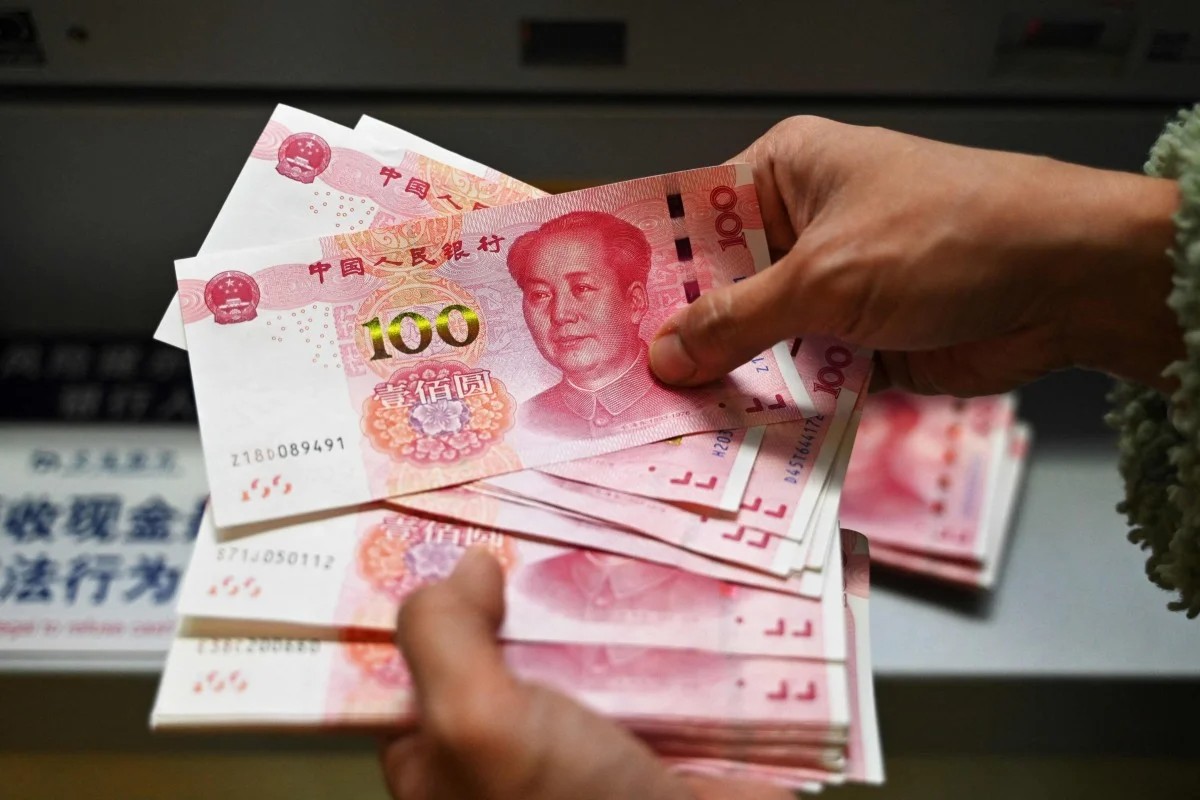Chilean peso down 5% against the US dollar as Latam currencies head for a tough week

The Chilean Peso (CLP) is facing continued market depreciation, with a substantial drop of over 5% against the US dollar (USD). That has propelled the USD/CLP pair to reach its highest level in ten months, approaching approximately 896.0000.
The CLP has experienced a decline for three consecutive months against the US dollar. This trend is attributed to the challenges encountered by the Banco Central de Chile (BCP) in maintaining stable interest rates, particularly in light of the rapid decline in inflation within the Chilean economy.
Chile’s inflation reaches two-year low
Chile has hit a two-year low in inflation, now at an annualized rate of 5.3%. That marks the ninth consecutive month of declining inflation, putting the BCP in the challenging position of needing to implement more significant rate cuts.
In response, the BCP reduced its benchmark rate by 75 basis points during its September meeting. Market analysts suggest that the Chilean central bank may soon consider even larger cuts, possibly up to 100 points, to support the broader economy substantially.
The institution also noted that developed economies are poised for an extended period of tight monetary policy. However, it acknowledged that various emerging economies have already embarked on a cycle of rate reductions.
The Central Bank has highlighted that global growth prospects for 2023 and 2024 remain lackluster, limiting the external boost the Chilean economy can expect. Furthermore, the bank has recognized that global financial markets are currently displaying a reduced appetite for risk, influenced by events like the downgrade of the US sovereign debt rating and uncertainties regarding economic performance and the pace of global disinflation.
In light of this situation, the Chilean peso has depreciated, primarily due to shifts in the interest rate differential with foreign currencies and heightened risk aversion in the international market. Concurrently, long-term interest rates have seen modest increases, while short-term rates have continued to decline, and access to bank credit remains constrained.
Despite these challenges, economic activity has followed expected patterns in the second quarter, with a more positive outlook in July, driven mainly by transitory factors.
Meanwhile, copper prices remain downward in the market, closing the week at $3.71 per pound, a decline from the high of $4.27 per pound observed in January. The persistently low copper values are compounded by a deteriorating demand for copper from China, which is grappling with economic challenges. This situation has a notable impact on Chile, the world’s leading copper producer, as it is particularly sensitive to fluctuations in Chinese demand. Consequently, this dynamic continues to exert pressure on the Chilean Peso (CLP), keeping its value relatively weak.
Latin American currencies headed for a tough week
Latin American currencies are facing their most challenging week in four weeks, driven by the recent strength of the dollar and growing concerns about economic growth in China, a major consumer of commodities. The MSCI Latam currencies index has dropped by 0.2%, on track for a weekly decline of more than 1%, which is occurring as the dollar heads towards its lengthiest weekly winning streak in nine years, spurred by a series of robust economic indicators that have raised uncertainties about when US rate hikes will end.
Brendan McKenna, an international economist and FX strategist at Wells Fargo Securities, noted the possibility of Chilean policymakers considering 100-basis-point rate cuts. He also mentioned that Chile might be among the central banks moving most swiftly in easing monetary policy, potentially contributing to continued peso weakness.
In Brazil, the real has slipped by 0.1%, with the equity market closed on Thursday in observance of Independence Day. Meanwhile, Colombia’s currency has seen a slight uptick of 0.1%, aided by higher crude prices. Recent data indicates that Colombia’s consumer prices for August increased by 0.7%, bringing the cumulative 12-month price growth to 11.43%. Mexico’s peso, on the other hand, has remained stable. MSCI’s index for Latin American stocks has dipped by 0.5% and is on track for a weekly decline of over 3%.
Turning to Argentina, all eyes are on upcoming data regarding August inflation and an imminent interest rate decision. The rapid price surge, accelerated by the government’s sharp devaluation of the peso, is putting immense pressure on consumers, leading to increased poverty rates and stirring voter discontent ahead of the October elections. It’s anticipated that inflation could reach nearly 200% by the end of the year.
In a positive development, an agreement between El Salvador and a consortium of local private banks to restructure short-term debt has contributed to a remarkable surge in the country’s international bonds. These bonds have yielded returns of over 90% this year. Meanwhile, in response to inflation dropping to a nearly two-decade low, Uruguay’s central bank is likely to implement another cut to its benchmark interest rate in the upcoming monetary policy meeting scheduled for October, according to Governor Diego Labat.
Regarding global finance, discussions regarding incorporating domestic debt into restructuring plans for countries in default are set to take place on September 15, indicating progress after months of delays. Host nation India has indicated that G20 countries are nearing finalization of a declaration for the weekend summit of its leaders, implying that negotiators have made significant headway in bridging differences within the group, particularly regarding the situation in Ukraine.
Chilean peso down 5% against the US dollar as Latam currencies head for a tough week

The Chilean Peso (CLP) is facing continued market depreciation, with a substantial drop of over 5% against the US dollar (USD). That has propelled the USD/CLP pair to reach its highest level in ten months, approaching approximately 896.0000.
The CLP has experienced a decline for three consecutive months against the US dollar. This trend is attributed to the challenges encountered by the Banco Central de Chile (BCP) in maintaining stable interest rates, particularly in light of the rapid decline in inflation within the Chilean economy.
Chile’s inflation reaches two-year low
Chile has hit a two-year low in inflation, now at an annualized rate of 5.3%. That marks the ninth consecutive month of declining inflation, putting the BCP in the challenging position of needing to implement more significant rate cuts.
In response, the BCP reduced its benchmark rate by 75 basis points during its September meeting. Market analysts suggest that the Chilean central bank may soon consider even larger cuts, possibly up to 100 points, to support the broader economy substantially.
The institution also noted that developed economies are poised for an extended period of tight monetary policy. However, it acknowledged that various emerging economies have already embarked on a cycle of rate reductions.
The Central Bank has highlighted that global growth prospects for 2023 and 2024 remain lackluster, limiting the external boost the Chilean economy can expect. Furthermore, the bank has recognized that global financial markets are currently displaying a reduced appetite for risk, influenced by events like the downgrade of the US sovereign debt rating and uncertainties regarding economic performance and the pace of global disinflation.
In light of this situation, the Chilean peso has depreciated, primarily due to shifts in the interest rate differential with foreign currencies and heightened risk aversion in the international market. Concurrently, long-term interest rates have seen modest increases, while short-term rates have continued to decline, and access to bank credit remains constrained.
Despite these challenges, economic activity has followed expected patterns in the second quarter, with a more positive outlook in July, driven mainly by transitory factors.
Meanwhile, copper prices remain downward in the market, closing the week at $3.71 per pound, a decline from the high of $4.27 per pound observed in January. The persistently low copper values are compounded by a deteriorating demand for copper from China, which is grappling with economic challenges. This situation has a notable impact on Chile, the world’s leading copper producer, as it is particularly sensitive to fluctuations in Chinese demand. Consequently, this dynamic continues to exert pressure on the Chilean Peso (CLP), keeping its value relatively weak.
Latin American currencies headed for a tough week
Latin American currencies are facing their most challenging week in four weeks, driven by the recent strength of the dollar and growing concerns about economic growth in China, a major consumer of commodities. The MSCI Latam currencies index has dropped by 0.2%, on track for a weekly decline of more than 1%, which is occurring as the dollar heads towards its lengthiest weekly winning streak in nine years, spurred by a series of robust economic indicators that have raised uncertainties about when US rate hikes will end.
Brendan McKenna, an international economist and FX strategist at Wells Fargo Securities, noted the possibility of Chilean policymakers considering 100-basis-point rate cuts. He also mentioned that Chile might be among the central banks moving most swiftly in easing monetary policy, potentially contributing to continued peso weakness.
In Brazil, the real has slipped by 0.1%, with the equity market closed on Thursday in observance of Independence Day. Meanwhile, Colombia’s currency has seen a slight uptick of 0.1%, aided by higher crude prices. Recent data indicates that Colombia’s consumer prices for August increased by 0.7%, bringing the cumulative 12-month price growth to 11.43%. Mexico’s peso, on the other hand, has remained stable. MSCI’s index for Latin American stocks has dipped by 0.5% and is on track for a weekly decline of over 3%.
Turning to Argentina, all eyes are on upcoming data regarding August inflation and an imminent interest rate decision. The rapid price surge, accelerated by the government’s sharp devaluation of the peso, is putting immense pressure on consumers, leading to increased poverty rates and stirring voter discontent ahead of the October elections. It’s anticipated that inflation could reach nearly 200% by the end of the year.
In a positive development, an agreement between El Salvador and a consortium of local private banks to restructure short-term debt has contributed to a remarkable surge in the country’s international bonds. These bonds have yielded returns of over 90% this year. Meanwhile, in response to inflation dropping to a nearly two-decade low, Uruguay’s central bank is likely to implement another cut to its benchmark interest rate in the upcoming monetary policy meeting scheduled for October, according to Governor Diego Labat.
Regarding global finance, discussions regarding incorporating domestic debt into restructuring plans for countries in default are set to take place on September 15, indicating progress after months of delays. Host nation India has indicated that G20 countries are nearing finalization of a declaration for the weekend summit of its leaders, implying that negotiators have made significant headway in bridging differences within the group, particularly regarding the situation in Ukraine.

